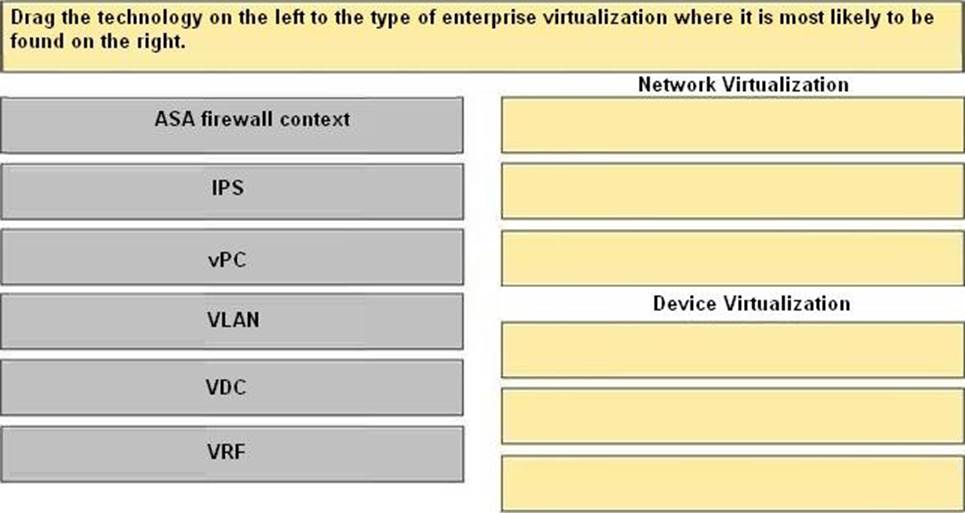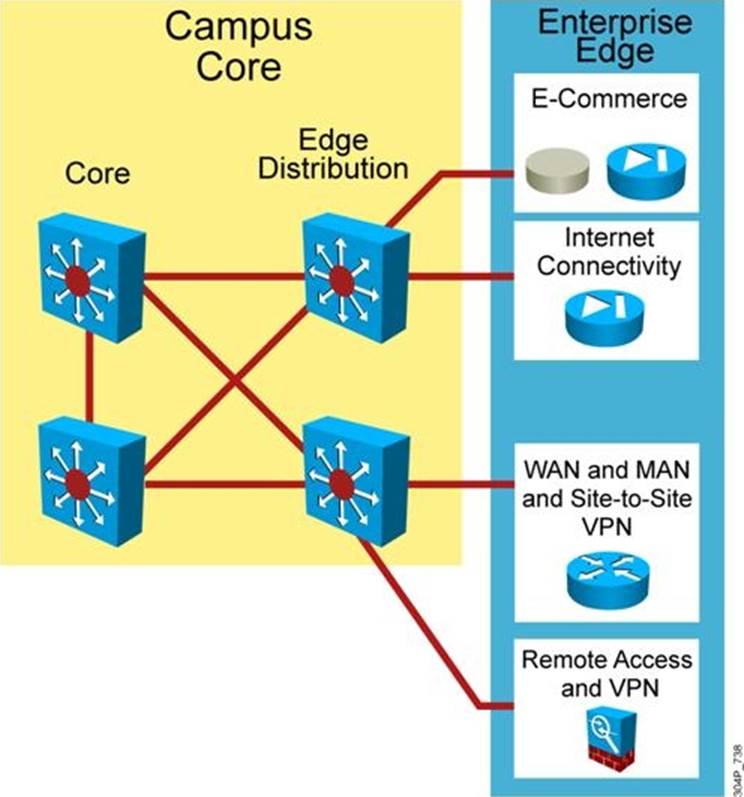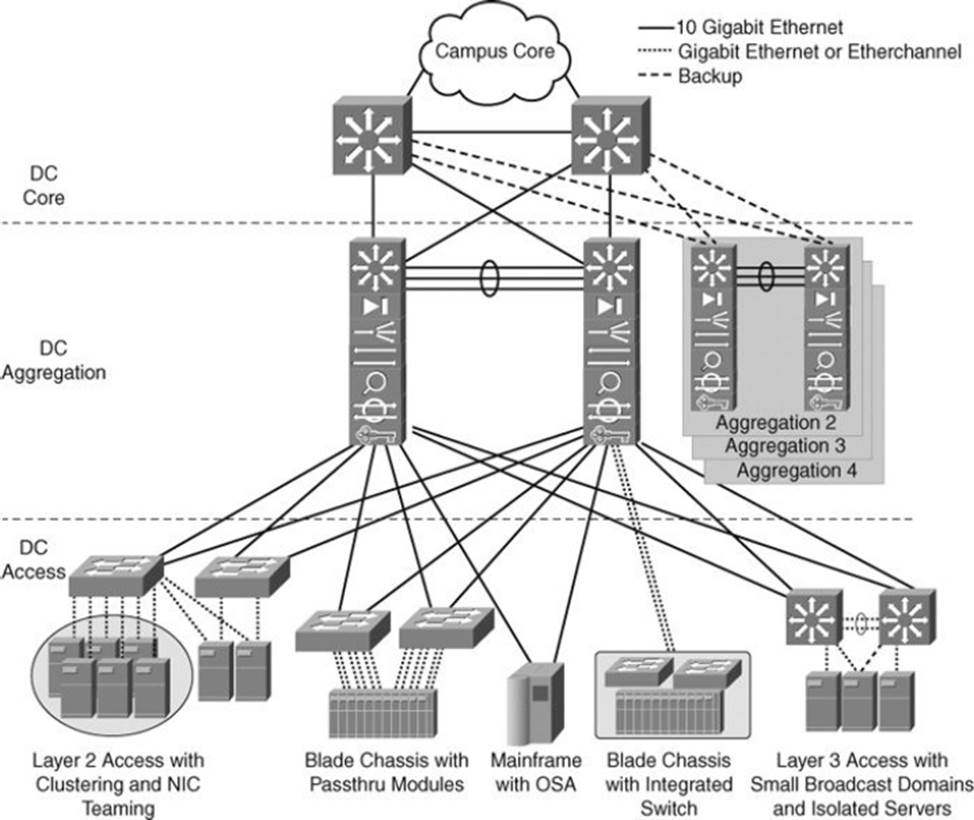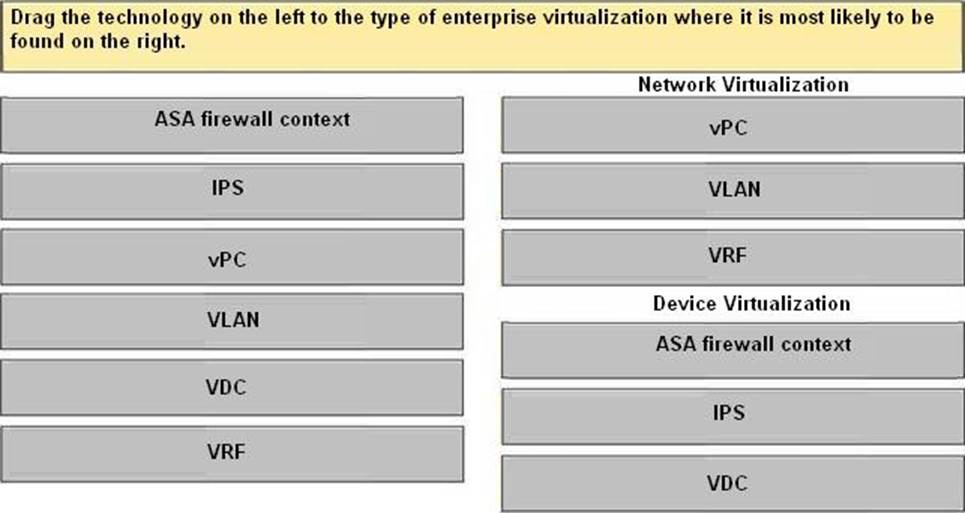Cisco 200-310 Designing for Cisco Internetwork Solutions Online Training
Cisco 200-310 Online Training
The questions for 200-310 were last updated at Dec 04,2025.
- Exam Code: 200-310
- Exam Name: Designing for Cisco Internetwork Solutions
- Certification Provider: Cisco
- Latest update: Dec 04,2025
Spanning Layer 2 across geographically separate data centers is a key consideration for current data center designs.
Which is the name of the NX-OS technology that facilitates MAC in IP transport for Layer 2 VLANs across any IP network?
- A . Overlay Transport Virtualization
- B . Virtual Private LAN Services
- C . Generic Routing Encapsulation
- D . QinQ tunneling
Which two statements about designing the Data Center Access layer are correct? (Choose two.)
- A . Multiport NIC servers should each have their own IP address.
- B . Layer 3 connectivity should never be used in the access layer.
- C . Layer 2 connectivity is primarily implemented in the access layer.
- D . Multiport NIC servers should never be used in the access layer.
- E . Layer 2 clustering implementation requires servers to be Layer 2 adjacent.
What is the primary consideration when choosing a routed network design over a traditional campus network design?
- A . Layer 3 service support at the network edge
- B . the routing protocol choice: open (OSPF) or proprietary (EIGRP)
- C . the routing abilities of the host devices
- D . the need to control the broadcast domains within the campus core
When selecting which hardware switches to use throughout an enterprise campus switched network, which consideration is not relevant?
- A . whether data link layer switching based upon the MAC address is required
- B . the number of shared media segments
- C . which infrastructure service capabilities are required
- D . whether to support Layer 3 services at the network edge
Which two of these practices are considered to be best practices when designing the access layer for the enterprise campus? (Choose two.)
- A . Implement all of the services (QoS, security, STP, and so on) in the access layer, offloading the work from the distribution and core layers.
- B . Always use a Spanning Tree Protocol; preferred is Rapid PVST+.
- C . Use automatic VLAN pruning to prune unused VLANs from trunked interfaces to avoid broadcast propagation.
- D . Avoid wasted processing by disabling STP where loops are not possible.
- E . Use VTP transparent mode to decrease the potential for operational error.
The enterprise campus core layer has requirements that are unique from the distribution and access layers.
Which of the following is true about the core layer?
- A . The core layer provides convergence using Layer 2 and Layer 3 services and features.
- B . The core layer provides high availability to support the distribution layer connections to the enterprise edge.
- C . The campus core layer is optional.
- D . The core layer requires high performance to manage the traffic policing across the backbone.
Which of these statements is true concerning the data center access layer design?
- A . The access layer in the data center is typically built at Layer 3, which allows for better sharing of services across multiple servers.
- B . With Layer 2 access, the default gateway for the servers can be configured at the access or aggregation layer.
- C . A dual-homing NIC requires a VLAN or trunk between the two access switches to support the dual IP addresses on the two server links to two separate switches.
- D . The access layer is normally not required, as dual homing is standard from the servers to the aggregation layer.
Which one of these statements is true concerning the data center distribution (aggregation) layer design?
- A . With Layer 3 at the aggregation layer, the physical loops in the topology must still be managed by STP.
- B . The boundary between Layer 2 and Layer 3 must reside in the multilayer switches, independent of any other devices such as firewalls or content switching devices.
- C . A mix of both Layer 2 and Layer 3 access is sometimes the most optimal.
- D . In a small data center, the aggregation layer can connect directly to the campus core, exchanging IP routes and MAC address tables.
DRAG DROP
Drag the technology on the left to the type of enterprise virtualization where it is most likely to be found on the right.

Refer to the exhibit.

Which statement is true concerning enterprise edge distribution switches?
- A . The speed of switching is the most critical feature.
- B . Security requirements are offloaded to the other modules for performance reasons.
- C . Edge distribution switches are only required when using a collapsed core backbone.
- D . Enterprise edge distribution switches are similar to the building distribution layer.
Latest 200-310 Dumps Valid Version with 644 Q&As
Latest And Valid Q&A | Instant Download | Once Fail, Full Refund



